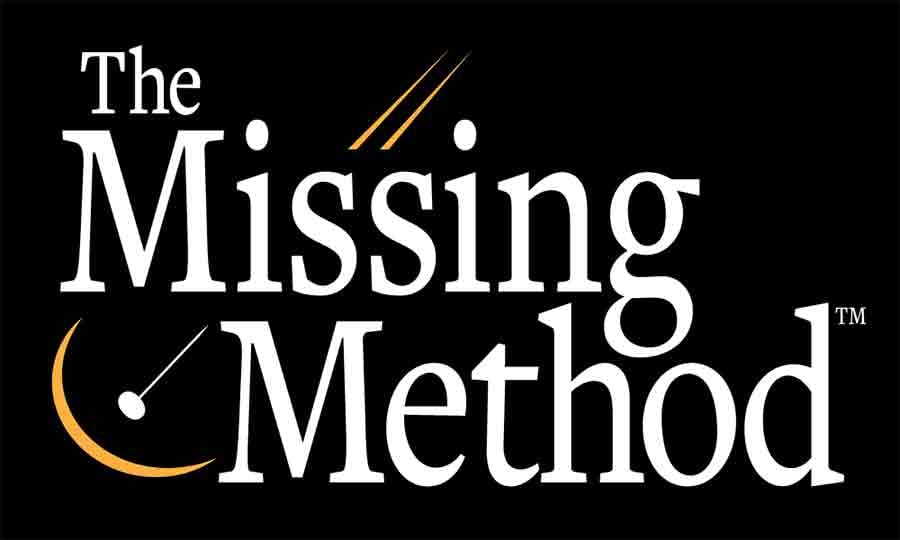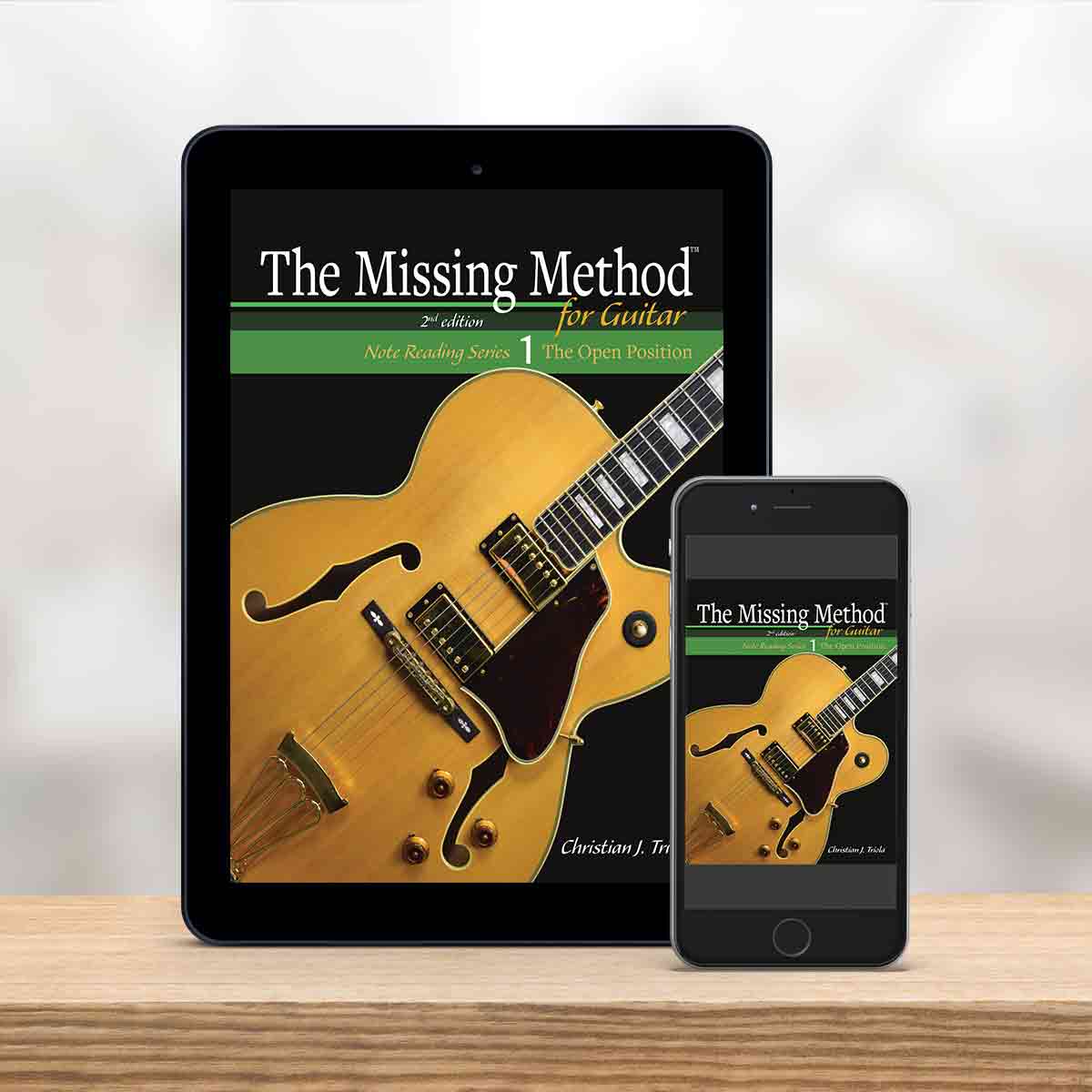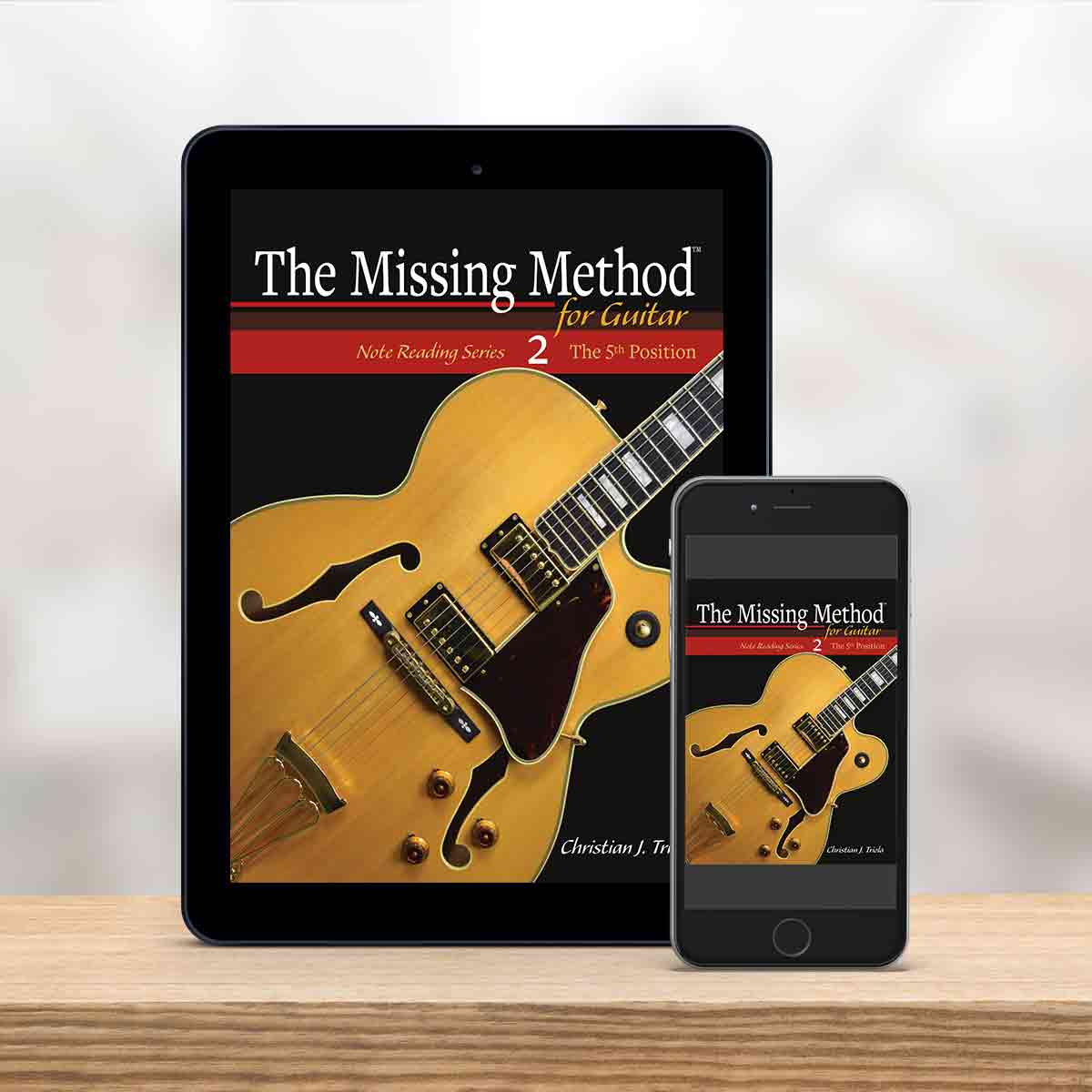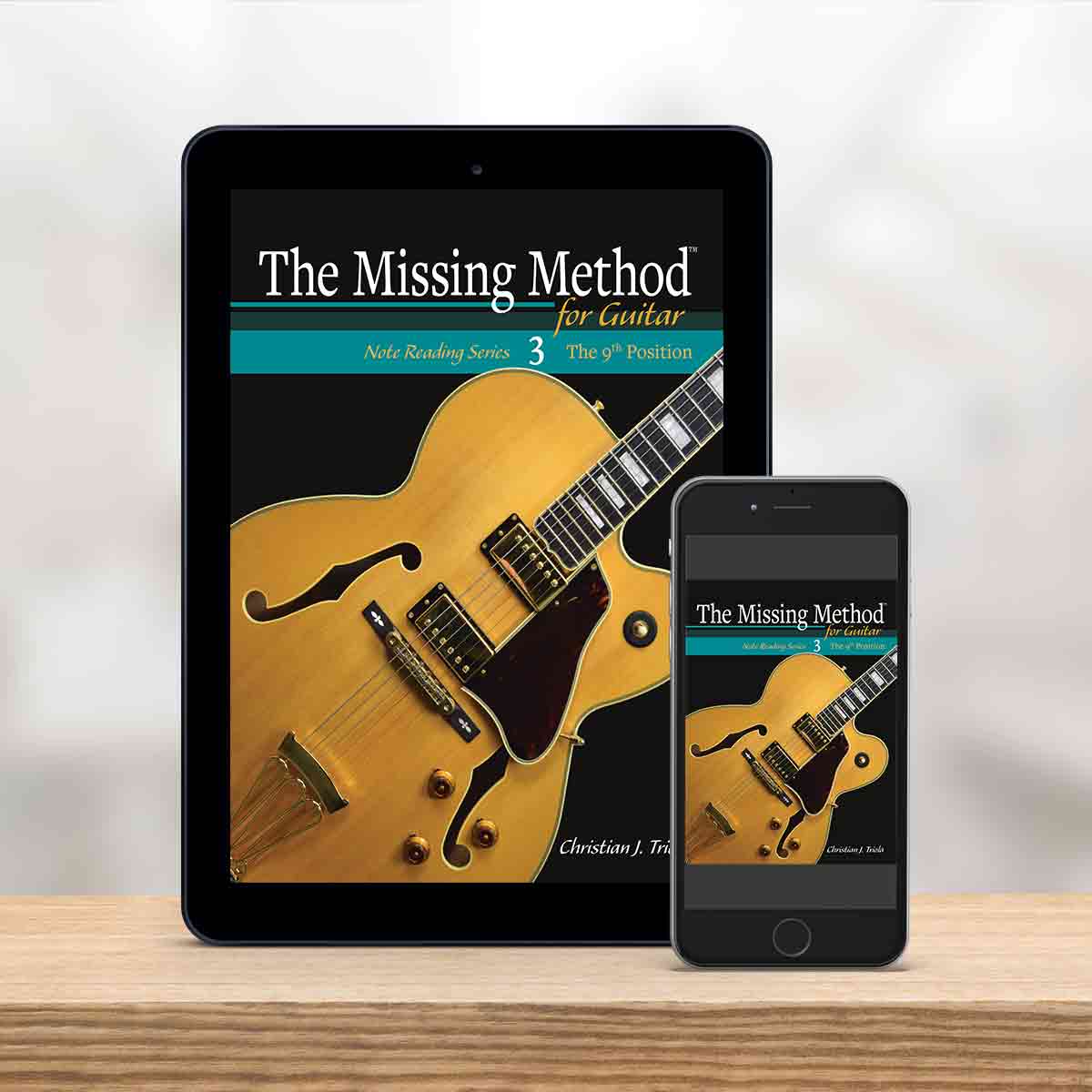In this video, I'm going to show you how to get started playing fingerstyle. So be sure to download the PDF that comes along with this video. It gives you some exercises so that you can start working on your finger-picking techniques that I'll be talking about here today.
So fingerstyle sounds really cool. Whether you're talking about Blackbird by Paul McCartney and the Beatles or Andre Segovia playing some classical music, et cetera, or you have all sorts of different styles in country and in rock and in jazz. Classical guitar of course is all fingerstyle and it just sounds amazing. I mean, I don't know anybody who doesn't like the sound of someone just grabbing a chord and playing through the notes like that. It sounds really good, it gives you a totally different feel from strumming, and it's definitely a skill I think every guitar player should explore.
So today I'm going to show you all the basics. So if you've never done any finger-picking before in your life we'll get you started with this video lesson.
So step one to finger-picking is understanding what your fingers are usually referred to as when you see it on paper. Now you might think, oh, they're just, you know, thumb, index middle, but they don't. Instead they use the Spanish terms for those fingers. So I might be pronouncing them incorrectly, but I'm going to go for it anyway. So we have pulgar for your thumb. So we will usmiddle finger, so they use the letter "m" so that's easy to remember. And then finally the ring finger anular. So the letter "a" is used to show that. The pinky isn't typically used in finger-picking. It can be, some styles do include it, but for the most part, it's kind of just there, it's just kind of ignored. Now can be used when you're doing some like Spanish strumming because sometimes you'll use the pinky to strum across the strings. But that's not really what we're going to get into today. Instead, we're going to talk about basic accompaniment and some basic styles that you might want to explore.
So now that you know the names of the fingers, thumb, or P index, or I middle or M ring finger letter, A - P I M A. Now we can start playing. So our second step is to get the fingers onto the strings. So your thumb is going to be positioned like this. It's going to be running parallel to the string, and you're going to use partially the skin of thumb, plus the thumbnail to get a nice, clear sound.
Now for our purposes today, our thumb is going to cover either string six, five or four, and it's only going to play one of those at a time. The next thing you want to do is get your hand, your other fingers on the strings. Your index finger will go on string three, your middle finger will be placed on string two, and your ring finger goes on string one.
Now you want your fingers curved. You don't want to be straight, you know, kind of like that. You don't want that you want your hand to be curved. So it looks kind of like that. So if you took your hand away, you'd have like a thumbs up with your fingers underneath it kind of at an angle. Alright, so we have our hand on the instrument and you can kind of see what that looks like here.
So when you're playing this style, you want to constantly be preparing your fingers and then playing them. You don't want to play, and then try to find a note play it and try to find your next note. Now I'm exaggerating here, but even if your fingers aren't on the strings, you're constantly searching for them.
So the way to end that search is to constantly prepare, then play, prepare then play. So now that we have our fingers in place, let's get a chord with, say the G chord, for example. You would hold down the G chord, so of course, third finger on the first string, third fret, middle finger on the last string, third fret, index finger on the fifth string, second fret. Now, instead of strumming, like we would do with the pick, we're going to play the notes of the chord one at a time. But we're not going to play every single one of them because we don't need to. We're just going to play four notes, one for each of the fingers. So we'll start with the thumb. We'll have our fingers in position, play the thumb, and then we'll play the index finger on the third string.
Now notice that I keep the other fingers down. I play with the thumb, index comes up, but it pulls into the hand. It doesn't come out. It comes in, and you kind of move in from the knuckle. So the thumb, index, the middle will do the same thing. It comes in from the knuckle. You don't pull out and then hit it. That's too much energy, too much work. You just come in from the knuckle. And then the same thing with the ring. Now you'll notice when I play the ring, my thumb automatically goes down. My thumb hits that last string, where I'm going to pick up that chord again. So thumb, index, middle, ring. Thumb goes down. Once the thumb plays, my other three fingers go immediately into position. So you notice I just played and my fingers are, is locked right on those strings so they can play. Thumb goes down fingers, go down.
And so to start, you just want to do that over and over again. Thumb, index, middle, ring. Thumb, index, middle, ring. And then of course you would want to try that with different courts. The reason is so that you can have a different base note to get your thumb practicing playing different bass notes.
So the next thing that we're going to do is play the C chord. The reason I chose C is that the root is on the fifth string. So we'll play fifth string with the thumb and then the other fingers are gonna play the same thing they did on a G chord. But now the notes up here have changed so it'll sound like a C chord. So we have thumb, index on the third, middle on the second, ring on the first. And you just want to do that over and over again.
Now, after you do the C chord, you'd switch to D major. So you have your first finger on the third string, second fret, middle finger on the first string, second fret. And then second string, third finger for that last note there. Your thumb's going to play the fourth string open, and then index, middle, ring.
So you have those three chords that you can use to explore finger-picking. Again G, C, D, come back to G. And of course it takes a little getting used to, to get all that coordinated. You don't want it to be just a haphazard thing or you just kind of throw your fingers down there and hope for the best. You want to have intention behind it. You want to make sure that it's following some kind of pattern.
Now, this is of course, a harp lake or accompaniment style of playing. There's a lot of other ways that you can finger pick on the guitar. And a lot of other accompaniment patterns. In fact, we're not going to get into a bunch of them today, but I do want to show you some variations. You could play things like thumb, middle, index, ring, just to add variety. Can you hear that breaks it up in a different way. Or this one, which always loved doing, which is thumb index, middle, index, middle, and then it just repeats over and over again like that. And then of course there's tons of other variations that you can do that will sound cool.
So once you have that basic thumb, index, middle, ring, start changing it up. Thumb, middle ring, index, thumb, ring, middle index. Come up with as many variations as you can think of, and it will really help your accompaniment style to come to life. Because you'll get all these different ideas.
Now we've looked at playing single notes, but you don't always just play single notes or arpeggio style when you're doing finger-picking. You can also do combinations of notes. So I'm going to go through a couple of exercises that will kind of get you started playing combinations of notes. So again, we're going to start with all the fingers in position down here, right over the sound hole. Then we're going to play two fingers together. So I'm going to get a G chord for this. We're going to play the thumb and index together, and then we're going to play the middle and ring together. So we have P I, and then M A. And you can hear, it gives it a really interesting sound, you're not just playing individual notes. Then it sounds really good.
All right, then we're going to mix it up some more. Thumb and middle, followed by index and ring. This one's a little bit trickier. And what's tricky about it is getting the index and ring to play at the same time. You'll find that that's a little bit difficult to do at first, but with practice, you'll get it. Trust me. And then finally, we have thumb and ring, and then you play the middle two fingers, index and middle. So we have thumb, ring, followed by index and middle.
Those will kind of give you some variations and some different sounds, and get you practicing your finger picking style. Even though we've assigned, you know, that the index finger to the third string, the middle finger to the second string, and the ring finger to the first string, that is a general rule. You can break that rule if you need to. Maybe bring it down here, do something like [plays].
Yeah, and just kind of have fun with it. I say, stick to this to start. That way you don't end up confusing yourself. You want to keep your mind clear on it and keep everything as slow and methodical as possible at first. So that the better you get at it, the better technique you build now, the fewer corrections you'll have to make in the future.
One habit that a lot of people get into when they start finger-picking is they'll just use one or two fingers after a while. They might use their thumb, but then your first finger takes over. Or your thumb, first finger, and middle finger, and you never use your ring. You want to avoid that because it really does limit what you're able to do. Now, there are famous players that had terrible fingerpicking technique yet still made it sound amazing. So it's not like it can't be done. It's just, this is the best way, and the most effective way of fingerpicking quickly and getting all your fingers to do what you want them to do.
So the next step you'd want to take is just getting those basic patterns down that I mentioned, and that are on the PDF. And then start coming up with your own combinations. You could maybe take a chord, play, thumb and ring, and then instead of playing the chord after that, play them one at a time. You can hear, that's just a G chord, but it sounds great. It's so much fun too.
Alright, so once you get these basics down, then you can start exploring different styles. You can start exploring classical guitar. You could start exploring Travis picking, which is a country style of guitar. They'd use this finger picking, of course. You could explore all sorts of rock tunes that use finger picking. In fact, some that come to mind right away. You have Fleetwood Mac's "Landslide". It's a beautiful tune. Great for finger-picking. We have Kansas playing "Dust in the Wind". I mean, that one is incredibly fun to play as well. So I highly recommend doing that one. REM's "Everybody Hurts". You don't have to play it with your fingers, but I like to. It's a lot of fun to do that way. You can also use a pick on that one and pick through it as well. And another one of the White Stripes, "We are Going to be Friends". That one is a simpler finger-picking pattern. So it's a really great one for new players to explore. All of those are decent. The only hard parts in let's say "Dust in the Wind" or some of the chords are a little bit tricky for beginners. But once you play through it a few times, it starts to come to you. You kind of get those little nuance parts that are there.
Alright, and if you want to hear some great finger-picking, some people that I'd recommend are Chet Atkins, he's a country and jazz player. He has some amazing finger style arrangements. You have to check that out. It doesn't sound like twangy country. It's just good, good stuff. We have Merle Travis, of course. He's more twangier country, more traditional. It's really great finger-picking style. Robert Johnson, the blues player. He used a lot of thumb, a lot of fingers in his playing. You can really hear that. And you should listen to Robert Johnson anyway. It's kind of like the beginning of Rock and Roll in a lot of ways, just his style of playing music, even though it's Blues.
Christopher Parking, the classical player, and pretty much any classical guitar player is also great for learning a finger-picking style for listening to what the guitar can do, is just gorgeous. John Williams, the classical player, not the composer, it's a different guy. He's another one that comes to mind. David Russell comes to mind. There's there's countless number of them. Joe pass the jazz guitar player. He used to get a lot of stuff with fingerpicking and a pick, did a lot of hybrid picking as well, which is when you use both. And he's just got some incredible guitar arrangements using his fingers. So I definitely would recommend checking those guys out if you haven't already.
I hope you enjoyed this lesson. Don't forget to download a copy of the handout to practice with, and bookmark our page so you can easily stop by soon for more lessons.






